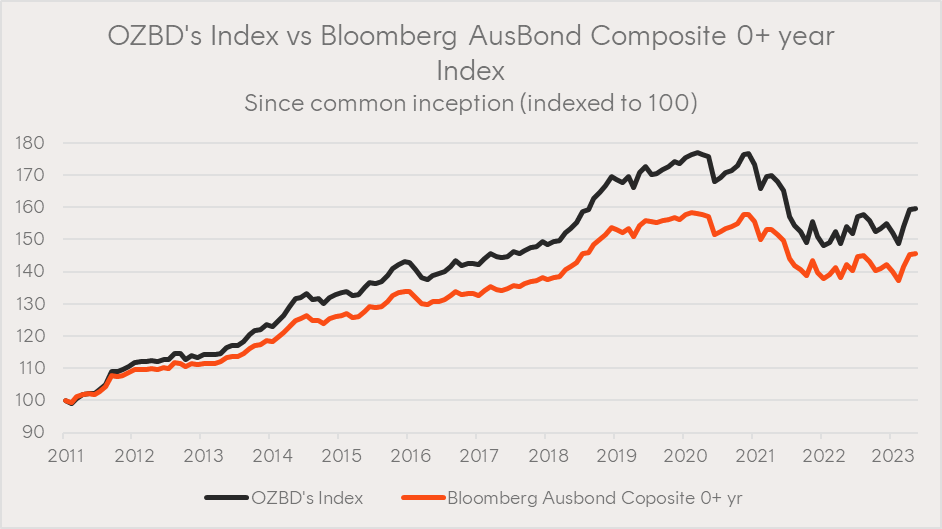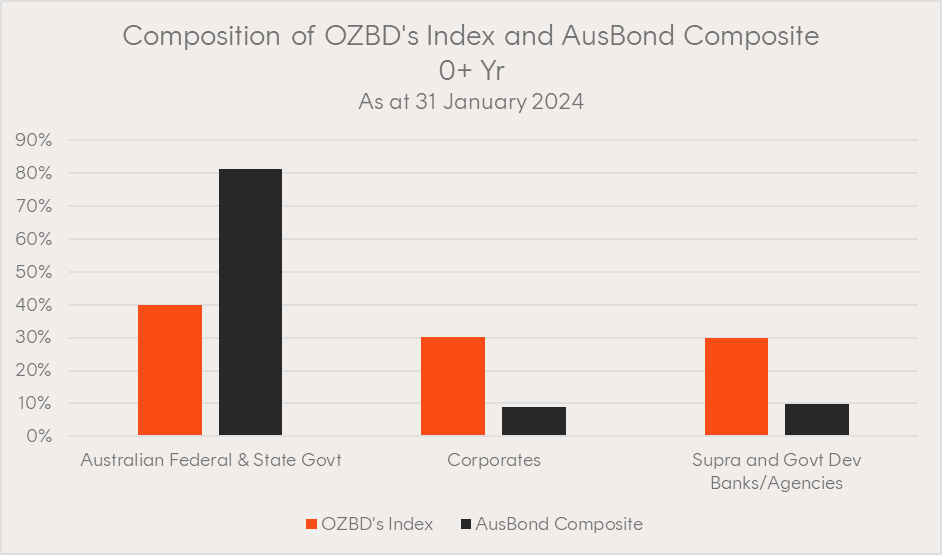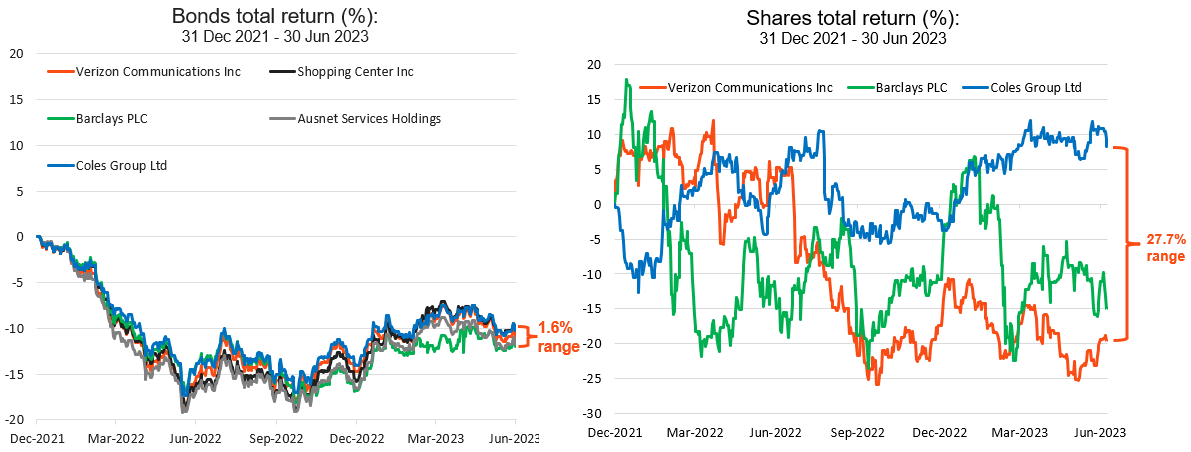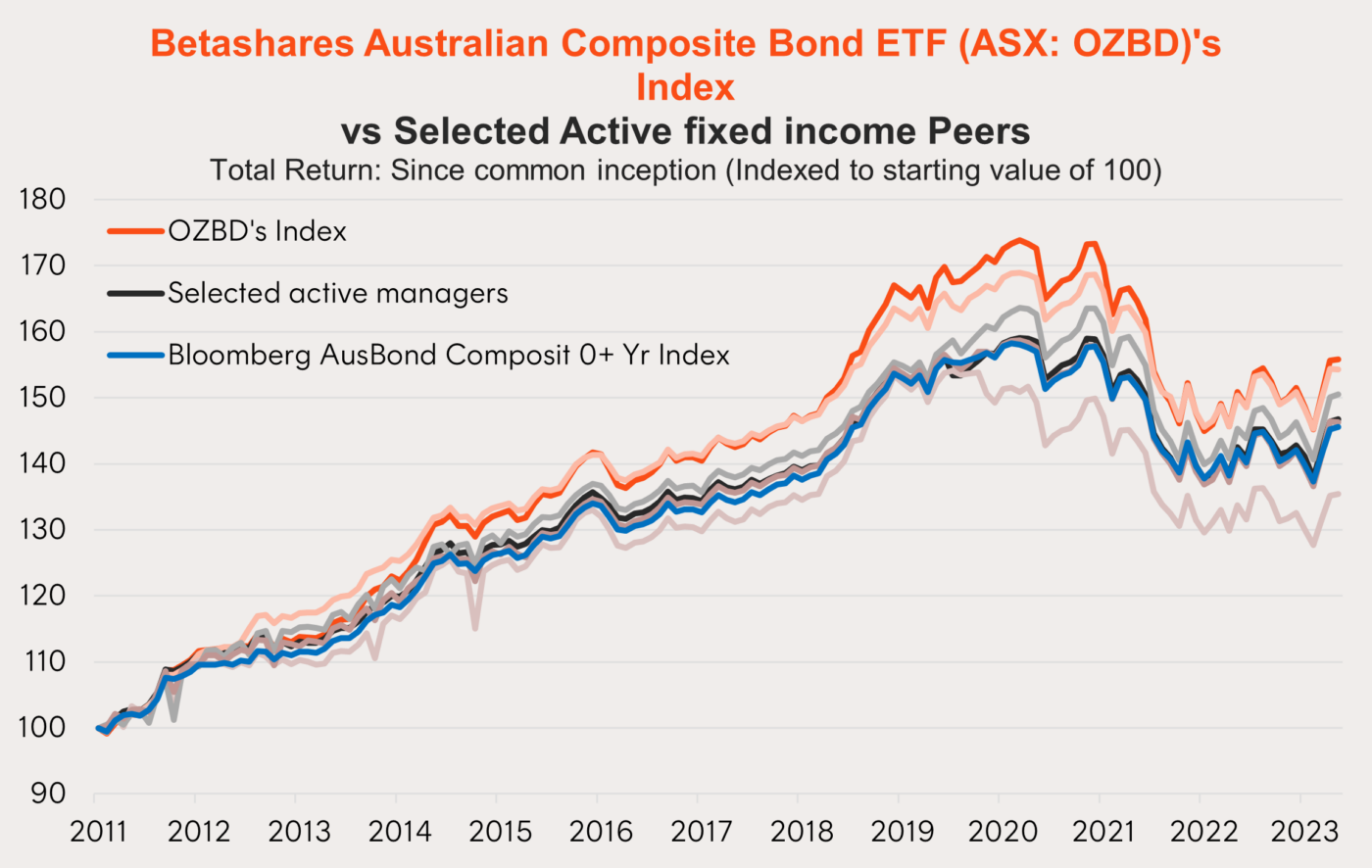Investment Strategist Tom Wickenden of Betashares talks about Betashares Australian Composite Bond ETF (ASX: OZBD) and explains how the OZBD ETF can address shortcomings regarding the need to choose between high-cost active managers and low cost passive index approaches, and provide investors with a better core portfolio allocation for Australian fixed income.
Fixed-rate bonds form an important part of most well-diversified investment portfolios.
However, to this day, bond investors still largely need to choose between high-cost active managers and low cost – yet very simple – passive index approaches.
Betashares and Bloomberg designed the Bloomberg Australian Enhanced Yield Composite Bond Index, OZBD, which aims to track and to address these shortcomings and provide investors with a better core portfolio allocation for Australian fixed income.
Unlike a traditional market cap weighted bond index, OZBD’s index weights bonds on the basis of their risk-adjusted income potential, while still controlling for overall interest rate and credit risk.
The result is a well-diversified portfolio of high-quality Australian corporate and government bonds weighted to enhance yield by utilising the same return levers as active managers, but at a fraction of the cost.

Traditional fixed income indices have inefficiencies
Traditional bond indices, like the Bloomberg Ausbond Composite 0+ year Index (AusBond Composite), use liability weighted methodologies.
Applying a logic similar to market capitalisation weighted equity indices, the bonds with the largest issuance size will also carry the greatest weight in the index.
Importantly for asset allocators this weighting methodology has influenced the diversification of traditional bond indices over time.
For example, following the substantial government bond issuance since the GFC, the AusBond Composite has transitioned from a well-diversified blend of Australian corporate and government bonds to currently holding 81% of its allocation in Australian government bonds, and just 10% in corporate bonds, the remainder being held in supranational issuers.
By contrast, OZBD’s index has parameters designed to ensure better diversification is maintained at an issuer level.
Specifically, OZBD’s index divides the universe of eligible bonds into sub-components such as the Australian government 1-5 year and Australian non-government 1-5 year components. These sub-components are then required to contribute a minimum weight within the index.
Combined with the index’s smarter weighting approach, the result is a better diversified core portfolio of Australian issued bonds, offering the potential for enhanced yield.
Importantly, OZBD’s index achieves this whilst mechanically maintaining overall risk characteristics similar to those of the AusBond Composite.
As at 31 January 2024, the credit rating of the AusBond Composite is just one notch above OZBD’s index, AA+ compared to AA.

How do active fixed income managers generate alpha?
Most investors are familiar with the concept of active managers using security selection to generate alpha.
By picking specific securities, managers aim to provide investors with better returns than a benchmark that indiscriminately invests in the entire universe of eligible securities.
However, for active fixed income managers, security selection may not offer the same alpha generation potential as their equity counterparts.
The example below involves 5 bonds with similar maturities and credit characteristics issued in Australia by a range of listed and unlisted companies across different regions and sectors.
By comparing the returns of these bonds to the returns of the shares issued by these listed companies, we can visualise the challenges that active fixed income managers face.
If you are an active manager attempting to generate alpha through security selection, you need the potential for a large differential between the best and worst performing securities (i.e. significant ‘return dispersion’).
Over the 18-month period in the graph below, the shares exhibited return dispersion of 27.7%, whereas the bond returns only provided managers with 1.6% of possible alpha through the selection of the best performing issuer.
With such low dispersion in Australian investment grade credit, generating any outperformance after trading costs from issuer selection could be difficult.

Rather than security selection, active fixed income managers use the levers of duration and credit to generate alpha.
Duration relates to the sensitivity of a bond’s market price to changes in market interest rates over time, and is positively related to a bond’s remaining term to maturity.
Generally speaking, longer duration bonds tend to offer higher yields, in part due to the compensation demanded by investors for the increased interest rate sensitivity.
Credit risk relates to the risk that the issuer of the bond could get into financial difficulty and default on either interest or principal repayments.
All else constant, corporate bonds tend to offer higher yields than government bonds, given their higher risk.
With this understanding, OZBD’s index is designed to achieve a more optimised balance between duration and credit risk than the AusBond Composite with the ultimate aim of maximising yield from the chosen bonds.
As a result, the portfolio comprises bonds with characteristics more closely resembling those of an actively managed bond fund, whilst retaining the advantages of a passive index approach—namely, lower fees.
These features have led to compelling long-term outperformance for OZBD’s strategy against the benchmark AusBond Composite and active fixed income peers alike.



